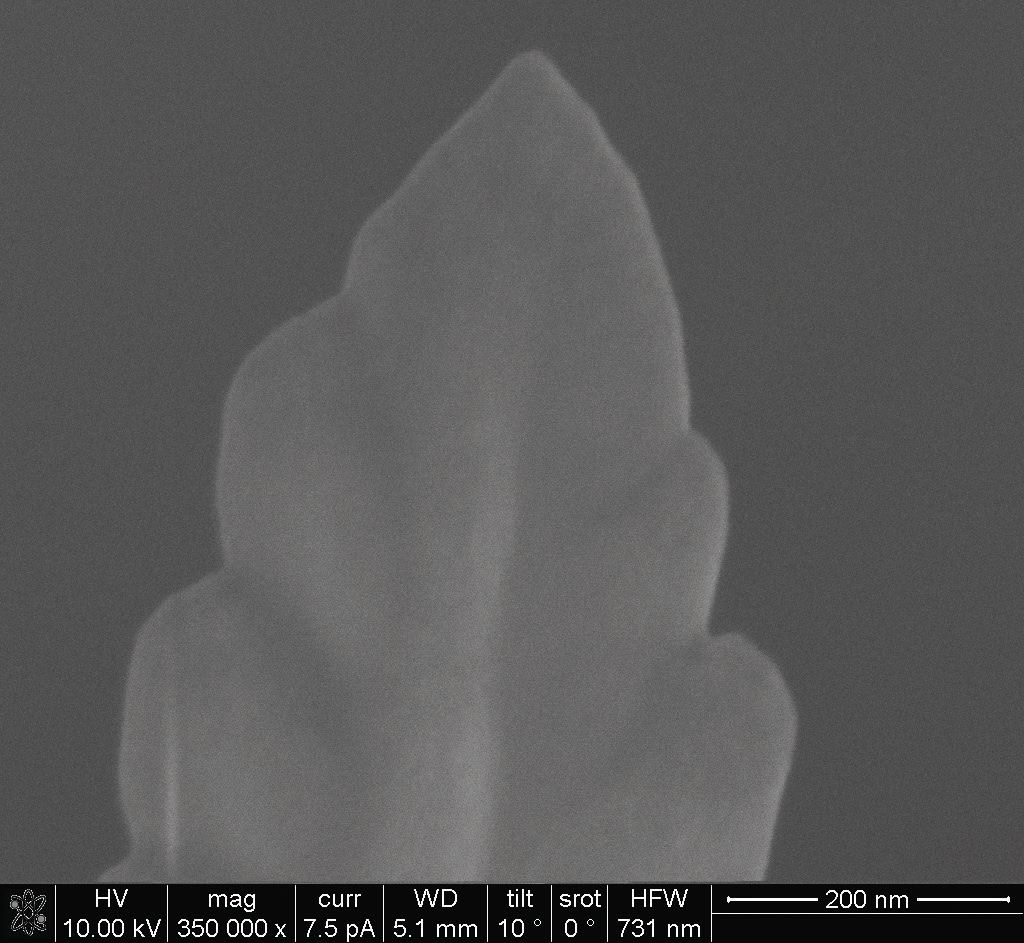Dendrite-suppressing battery technology
Dr. Neil Canter, Contributing Editor | TLT Tech Beat April 2015
Researchers have developed a new ion-conducting membrane from aramid nanofibers and poly(ethylene oxide).
KEY CONCEPTS
•
The instability seen in the lithium-ion battery is caused by the electrolyte, which is also known as the ion-conducting membrane (ICM).
•
As battery capacity increases and charge/discharge rates increase, metallic filaments known as dendrites form more frequently and are a threat to the safe use of a lithium-ion battery.
•
A new ICM based on aramid nanofibers and poly(ethylene oxide) has now been developed that stops the growth of dendrites leading to the potential for the development of safer lithium-ion batteries.
EFFORTS TO DEVELOP MORE EFFICIENT BATTERIES that will display higher capacities and charge/discharge rates are ongoing, but problems are continuing to be faced with safety. Lithium-ion batteries remain the leading battery choice due to superior performance, but there is concern about long-term longevity and flammability when energy density and charging rates further increase.
This issue became prominent in 2013 when Boeing was commercializing the 787 Dreamliner. Nicholas Kotov, Joseph B. and Florence V. Cejka professor of chemical engineering at The University of Michigan in Ann Arbor, Mich., agrees that the electrolyte also known as the ion-conducting membrane (ICM) causes instability in the lithium-ion battery. He says, “Besides conducting lithium ions, the ICM also acts to insulate the anode from the cathode electrically and needs to prevent the growth of metallic filaments called dendrites that occurs as batteries age.”
Dendrites (
see Figure 3) are formed from metal fibers of lithium or other metals that initially start on the anode where electrons are accepted. They can grow into a network of fern-like structures through the electrolyte until connecting with the cathode. Kotov says, “The net result is that an electronic current passing through the dendrites can short circuit the battery leading to overheating and eventually a fire.”
 Figure 3. A new ICM has been developed that can stop the growth of dendrites (such as the one shown here) increasing the possibility of producing safer lithium-ion batteries. (Figure courtesy of The University of Michigan.)
Figure 3. A new ICM has been developed that can stop the growth of dendrites (such as the one shown here) increasing the possibility of producing safer lithium-ion batteries. (Figure courtesy of The University of Michigan.)
Existing ICMs are prepared from polymers such as polyethylene, which are not ionically conductive. So large pores need to be introduced to ensure that there is ion flow. Kotov says, “These pores are hundreds of nanometers in size and cannot prevent dendrite (whose tip is less than 100 nanometers in size) from growing.”
One additional barrier is that dendrite formation occurs more frequently as battery capacity increases and charge/discharge rates are faster.
A need exists for a new type of ICM that will hinder dendrite growth. Such an ICM has just been developed.
PEO/ANF MEMBRANE
Kotov and his research associates have developed a new ICM that is a nanocomposite prepared from aramid nanofibers (ANFs) and poly(ethylene oxide) (PEO). The new material is known as a PEO/ANF.
Kotov says, “We started the work by first determining the requirements for a new ICM. The membrane needs to be strong, exhibit small pores, conduct ions, be resistant to high temperatures and contain an insulator.”
In examining all of the current nanoscale fibers, Kotov found that materials such as graphene and carbon fiber have trouble with conductivity and do not provide sufficient insulation. Aramid nanofibers insulate well and exhibit excellent strength.
The challenge was to take macroscale aramid fibers, which are unsuitable because they have very large pores into nanofibers. Kotov says, “We developed aramid nanofibers by dissolving the macrofibers in the special solvent DMSO. The polar nature of the solvent facilitates the formation of nanoscale fibers.”
PEO is used as the ion-conducting medium in the ICM. The PEO/ANF is prepared through the use of a layer-by-layer process that involves depositing the ANF and then the PEO sequentially to form the ICM film.
Kotov says, “We produced PEO/ANF films that are uniform and have diameters that are no more than 20 nanometers. The thickness of the ICMs is a few hundred nanometers.”
The researchers evaluated the ability of the PEO/ANF films to stop the growth of copper and lithium dendrites. Kotov says, “We initially worked with copper dendrites because they have the same fern-like shape as lithium dendrites, but are harder and smaller making them more difficult to suppress.”
The PEO/ANF films immediately stopped the growth of the copper dendrites. Further work with lithium-ion battery cells showed that the voltage profile remained steady up to the 2,500 cycles conducted. In contrast, a battery prepared with a commonly used ICM displayed a slowly deteriorating voltage profile from the 1st cycle to the 2,500th cycle. This decline is due to the formation of dendrites.
Kotov says, “We have determined that the PEO/ANF film show the right property profile to stop the growth of dendrites.”
The prospects for using this ICM technology commercially are leading the researchers to determine how to scale up production of PEO/ANF films. Kotov says, “We are attempting to determine how to produce this ICM in a continuous fashion using a roll process.”
The PEO/ANF film shows the potential to reduce the vulnerability of lithium-ion batteries to catch on fire. Additional information on this research can be found in a recent article (
1) or by contacting Kotov at
kotov@umich.edu.
REFERENCE
1.
Tung. S., Ho, S., Yang, M., Zhang, R. and Kotov, N. (2015), “A dendrite-suppressing composite ion conductor from aramid nanofibres,”
Nature Communications,
6 (6152), DOI: 10.1038/ncomms7152.
 Neil Canter heads his own consulting company, Chemical Solutions, in Willow Grove, Pa. Ideas for Tech Beat can be submitted to him at neilcanter@comcast.net
Neil Canter heads his own consulting company, Chemical Solutions, in Willow Grove, Pa. Ideas for Tech Beat can be submitted to him at neilcanter@comcast.net.